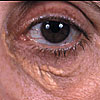Tag Archives: diagnosis

June 2014 Br J Cardiol 2014;21:75 doi:10.5837/bjc.2014.017
Do NICE tables overestimate the prevalence of significant CAD?
Jaffar M Khan, Rowena Harrison, Clare Schnaar, Christopher Dugan, Vuyyuru Ramabala, Edward Langford
| Full text
June 2014 Br J Cardiol 2014;21:49–50 doi:10.5837/bjc.2014.014
Where has the jugular venous pressure gone?
David E Ward
| Full textMarch 2012 Br J Cardiol 2012;19(Suppl 1):s1-s16
Lipids and CVD: improving practice and clinical outcome
| Full text
March 2012 Br J Cardiol 2012;19(Suppl 1):s1-s16 doi:10.5837/bjc.2012.s02
How can we improve clinical diagnosis of dyslipidaemia?
Dermot Neely
| Full textOctober 2011 Br J Cardiol 2011;18:219–22 doi:10.5837/bjc.2011.002
Patent foramen ovale: diagnosis, indications for closure and complications
Sudhakar George, David Hildick-Smith
| Full textSeptember 2010 Br J Cardiol 2010;17:215-16
Talking to patients: is it really an art or do we take the history for granted?
Michael Norell
| Full text
July 2010 Br J Cardiol 2010;17:195-200
The role of nucleic acid amplification techniques (NAATs) in the diagnosis of infective endocarditis
Gillian Rodger, Stephen Morris-Jones, Jim Huggett, John Yap, Clare Green, Alimuddin Zumla
| Full textMarch 2010 Br J Cardiol 2010;17:94–6
Brady/tachyarrhythmia preceding the diagnosis of cardiac sarcoid
Henry Oluwasefunmi Savage, Sheel Patel, Jonathan Lyne, Tom Wong
| Full textSeptember 2008 Br J Cardiol 2008;15:269-70
Occlusion of left main coronary artery diagnosed by computed tomography of the chest
Scot Garg, Christos Bourantas, Simon Thackray, Farqad Alamgir
| Full text

